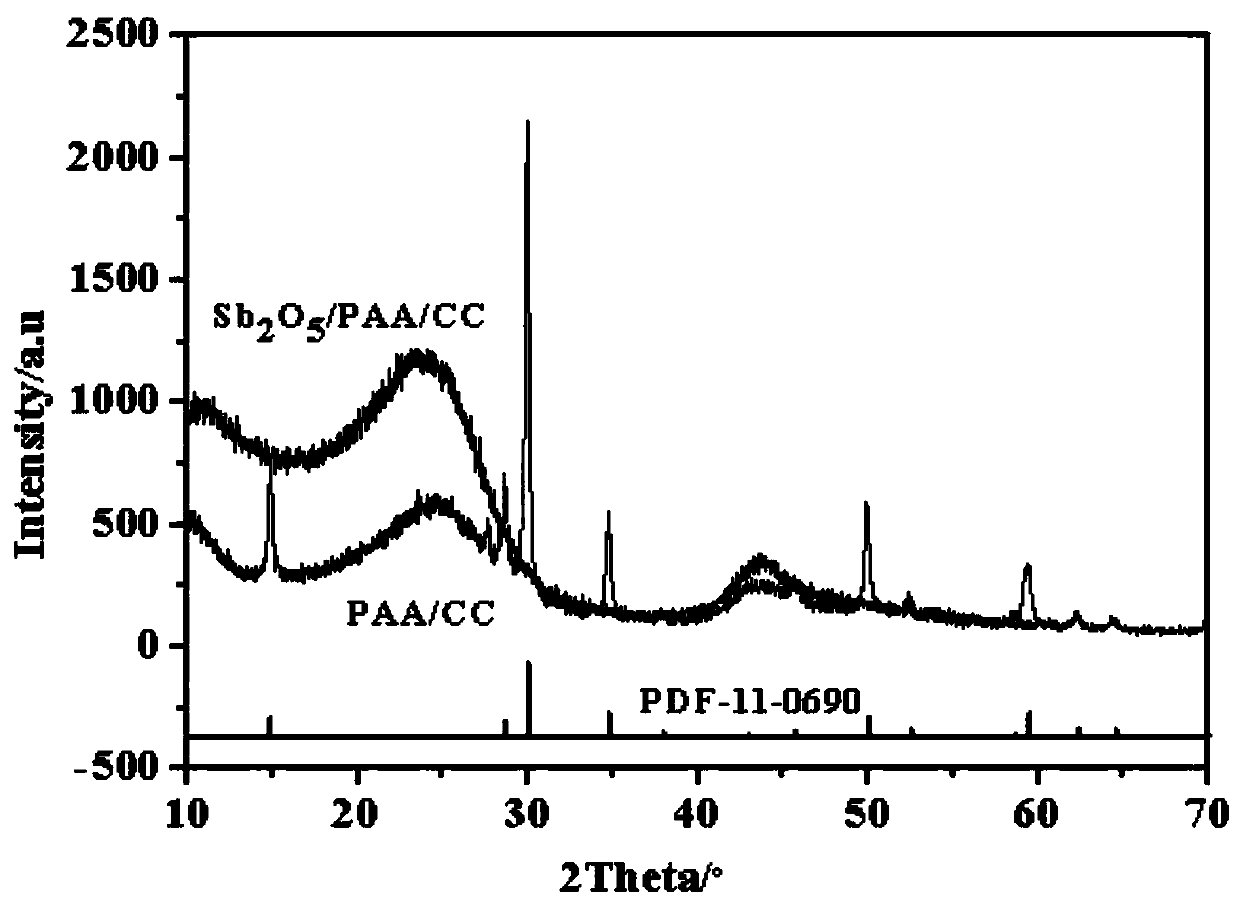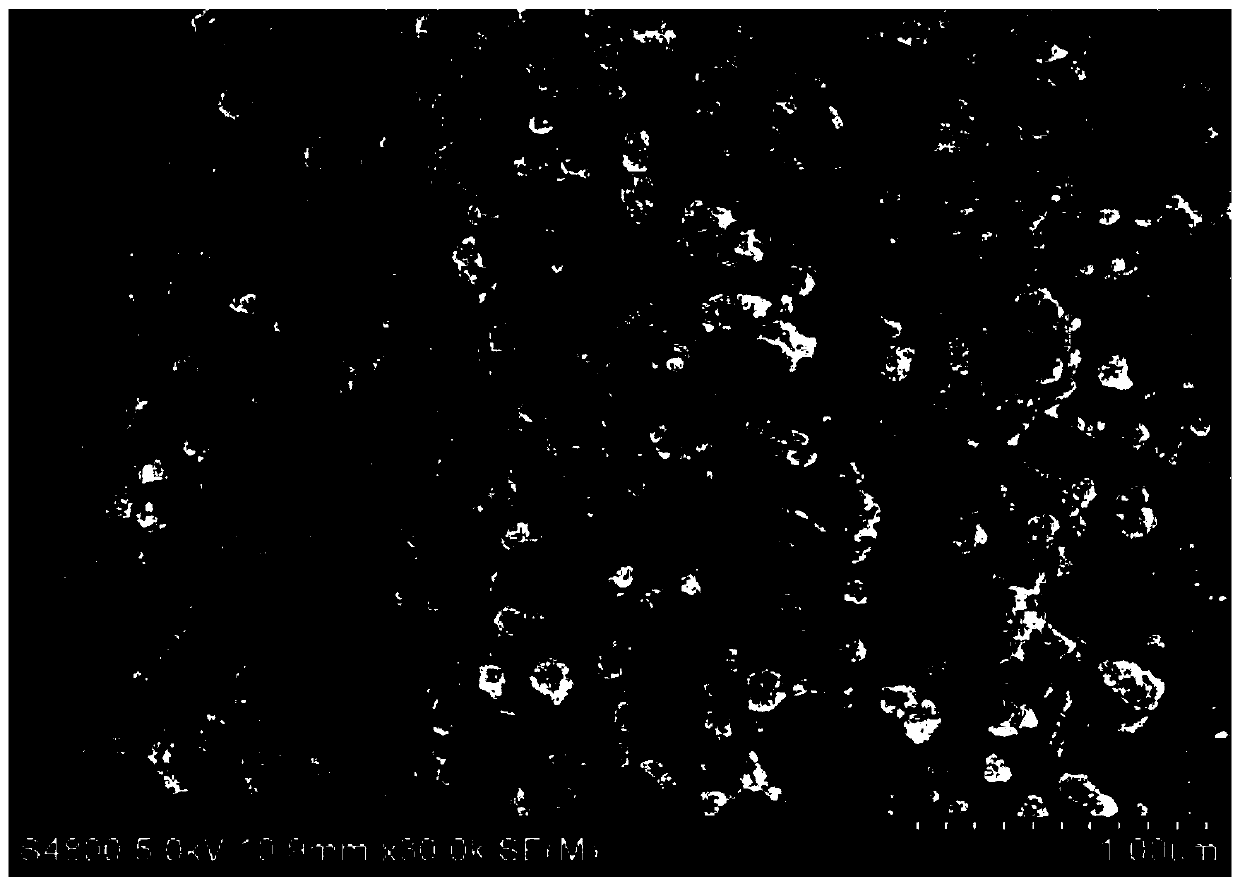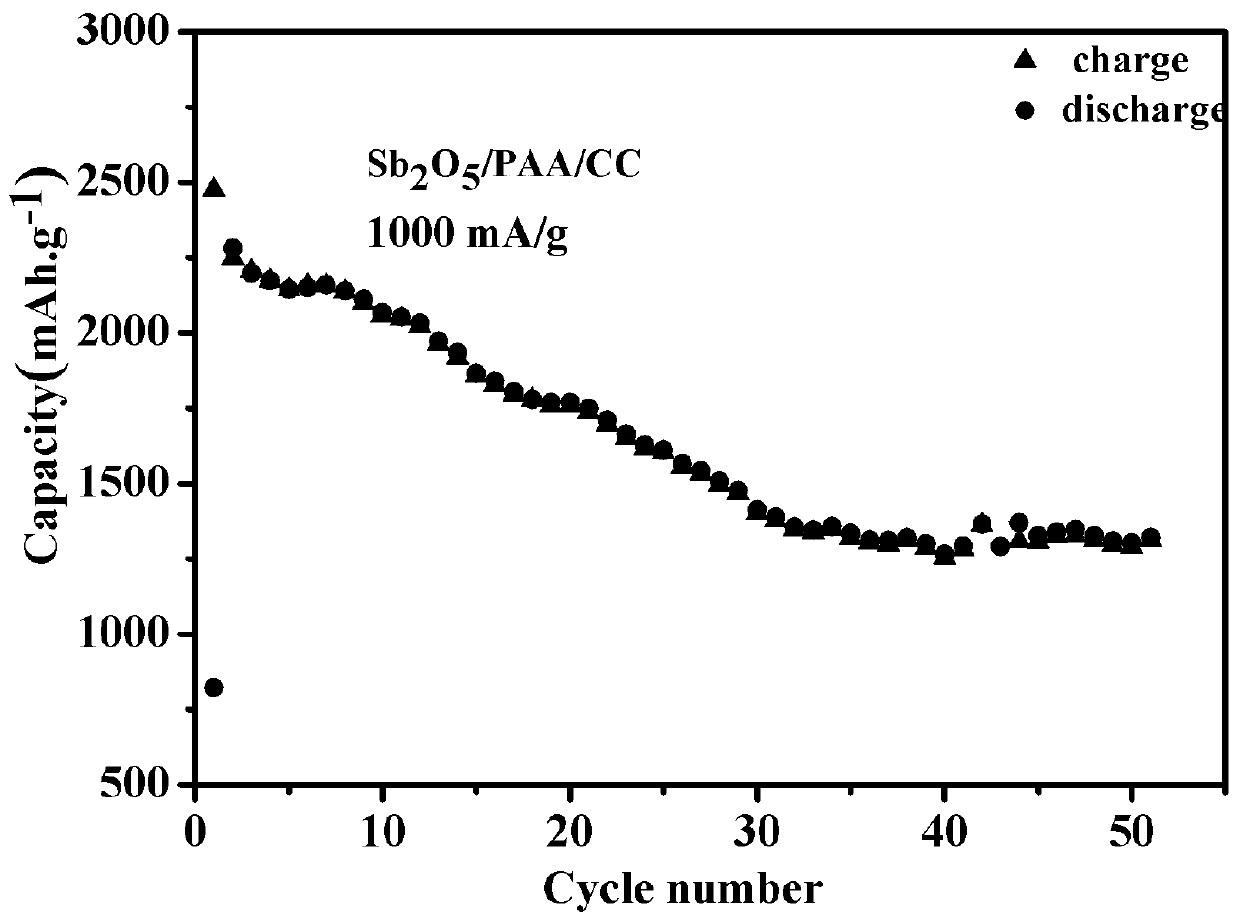Preparation method of antimony pentoxide/polyacrylic acid/carbon cloth flexible sodium ion battery negative electrode material with reticulate porous structure
A technology of antimony pentoxide and sodium ion batteries, which is applied in battery electrodes, secondary batteries, structural parts, etc., can solve problems that have not been reported yet, and achieve good mechanical properties, good shape retention, and short production cycles. Effect
- Summary
- Abstract
- Description
- Claims
- Application Information
AI Technical Summary
Problems solved by technology
Method used
Image
Examples
Embodiment 1
[0025] A preparation method of antimony pentoxide / polyacrylic acid / carbon cloth flexible sodium ion battery negative electrode material with mesh porous structure, comprising the following steps:
[0026] Step 1: Soak the hydrophilic carbon cloth with a size of 4cm*2cm in 50mL acetone for 24 hours to remove surface impurities, then wash it repeatedly with deionized water and absolute ethanol, and place the carbon cloth in an oven at 60°C to dry Dry; then put the dried carbon cloth into 1mg / mL polyacrylic acid aqueous solution and keep it for 1h for coating treatment, wash it repeatedly with deionized water and absolute ethanol respectively, place the carbon cloth in an oven at 60°C and then dry it ; Wherein, polyacrylic acid average molecular weight is 1250000;
[0027] Step 2: Add 0.3 g of antimony trichloride to 20 mL of absolute ethanol and stir magnetically to form an antimony trichloride solution, add 0.06 g / mL of sodium hydroxide aqueous solution to the antimony trichlor...
Embodiment 2
[0030] A preparation method of antimony pentoxide / polyacrylic acid / carbon cloth flexible sodium ion battery negative electrode material with mesh porous structure, comprising the following steps:
[0031]Step 1: Soak the hydrophilic carbon cloth with a size of 4cm*2cm in 50mL acetone for 36 hours to remove surface impurities, then wash it repeatedly with deionized water and absolute ethanol, and place the carbon cloth in an oven at 60°C to dry Dry; then place the dried carbon cloth into 3mg / mL polyacrylic acid aqueous solution for 1h for coating treatment, wash it repeatedly with deionized water and absolute ethanol respectively, place the carbon cloth in an oven at 60°C and then dry it ; Wherein, polyacrylic acid average molecular weight is 1250000;
[0032] Step 2: Add 0.57g antimony trichloride to 20mL of absolute ethanol and stir magnetically to form an antimony trichloride solution, add 0.08g / mL sodium hydroxide aqueous solution to the antimony trichloride solution to adj...
Embodiment 3
[0035] A preparation method of antimony pentoxide / polyacrylic acid / carbon cloth flexible sodium ion battery negative electrode material with mesh porous structure, comprising the following steps:
[0036] Step 1: Soak the hydrophilic carbon cloth with a size of 4cm*2cm in 50mL acetone for 72 hours to remove surface impurities, then wash it repeatedly with deionized water and absolute ethanol, and place the carbon cloth in an oven at 60°C to dry Dry; then place the dried carbon cloth into a 6mg / mL polyacrylic acid aqueous solution for 3 hours for coating treatment, wash it repeatedly with deionized water and absolute ethanol respectively, and place the carbon cloth in an oven at 60°C for further coating. drying; wherein, the average molecular weight of polyacrylic acid is 1,250,000;
[0037] Step 2: Add 0.57g antimony trichloride to 20mL of absolute ethanol and stir magnetically to form an antimony trichloride solution, add 0.06g / mL sodium hydroxide aqueous solution to the anti...
PUM
 Login to View More
Login to View More Abstract
Description
Claims
Application Information
 Login to View More
Login to View More - R&D Engineer
- R&D Manager
- IP Professional
- Industry Leading Data Capabilities
- Powerful AI technology
- Patent DNA Extraction
Browse by: Latest US Patents, China's latest patents, Technical Efficacy Thesaurus, Application Domain, Technology Topic, Popular Technical Reports.
© 2024 PatSnap. All rights reserved.Legal|Privacy policy|Modern Slavery Act Transparency Statement|Sitemap|About US| Contact US: help@patsnap.com










